 Dislikes: 0
-
Super Member

DIY LED Work Light (much better than halogen!)
As most of us know by now, lighting is crucial when doing any type of polishing or correction work.
Aside from the overhead lighting (typically fluorescent) found in many garages and shops, most people rely on some type of spot light or work light to further enhance their ability to spot defects on the vehicle they are working on. Halogen work lights are very common for this application because they are cheap, readily available, and bright.

Photo: Halogen work lights being used to show defects while correcting paint
While halogen lights do work well in many cases, they certainly are not perfect. The biggest complaint I have about them is they are incredibly hot... sitting next to a set of 1000W halogen lights for 6+ hours in 80+ degree ambient temps is enough to make you hate the job you're working on. On top of that, halogens often do not do a good job at displaying micromarring or da haze. The warmer color temperature of these bulbs also make it difficult to see defects on brighter colored paints, like reds and blues, therefore I find myself double checking everything with another light source anyways.
Many of us leave an inspection light of sorts nearby for this very reason. Whether it is a brinkmann dual xenon (mine just died, can we please have a moment of silence) or a high powered LED flashlight, most people would agree that these light sources are superior for final inspections as they typically work great at highlighting any fine haze or marring.

Photo: LED Flash Light used for inspection
With that in mind, I have been searching for the perfect LED spot light/work light for a while now. I recently purchased an LED work light from Home Depot (1720 Lumen) for around $80. I compared this light side by side with my halogens on some very metallic paint, and the LED was hands down superior. No, it was not nearly as bright (not even close!), but it showed WAY more defects than the halogens. It made me wonder why I was even using halogens anymore.

Photo: LED light from Home Depot used to inspect paint
I found this light to be much easier to work around as it did not put off heat, and did not require me to check each spot with my LED flashlight to ensure I was finishing down perfectly..... but with that being said, I still felt that there was room for improvement.
I stumbled upon an older thread on Autopia where the OP (concours.john) created his own LED work light utilizing a stand from a twin halogen setup along with 2 LED spot light assemblies from a local hardware store. This setup, as seen below, seemed to be more along the lines of what I was looking for.
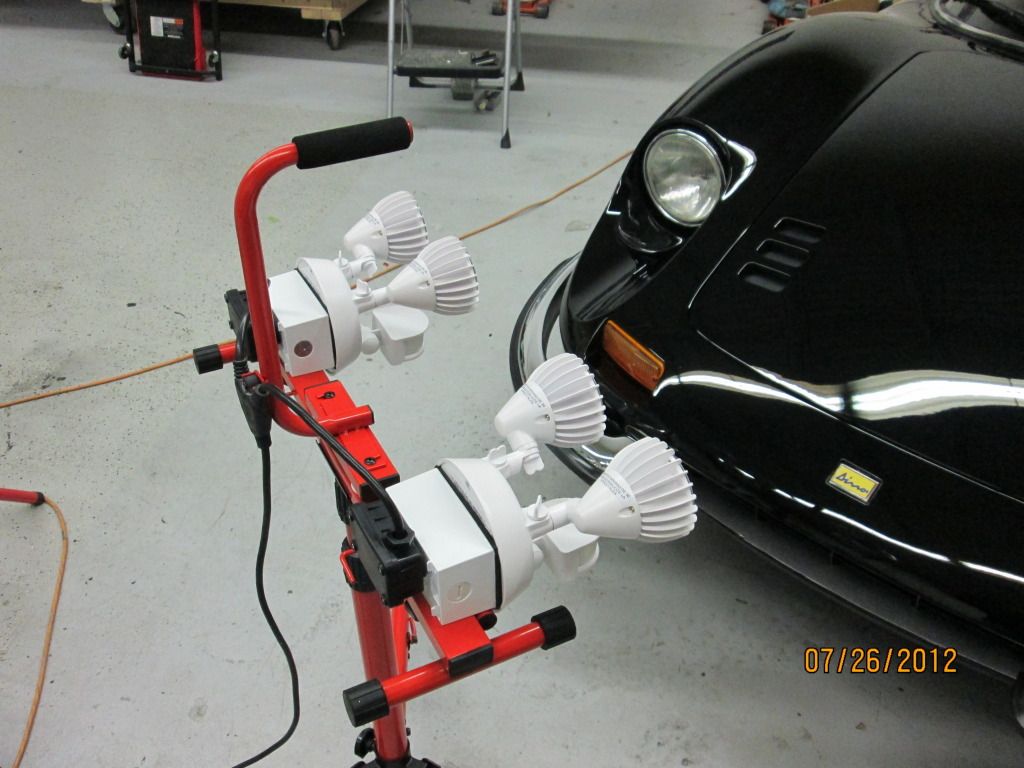
Photo: DIY LED setup from Concours.John (OP on autopiaforums)
With this design in mind, I set out to find an easier way to accomplish a similar setup. Given that I am a photography nerd, I remembered seeing a dual light bulb base setup that would work great for this. I set out to amazon and quickly found what I was looking for, and for only $9.

Photo: Dual Bulb Base on Amazon
I then searched my local hardware stores to locate some suitable LED spot lights that would fit this base. I was able to find these LED bulbs that are daylight temp (much better than the warm tones of halogens!) and 1400 Lumens each.

Photo: LED Spot Light Bulb from Lowes
Now, these bulbs are somewhat pricey at ~$35 each, but considering the single LED from the other hardware store was $80, the price seemed to be a fine deal.
Once I had all of the pieces (light stand (which I already owned), dual bulb mount, and 2 LED bulbs) I assembled the unit and decided to do a bit of testing.
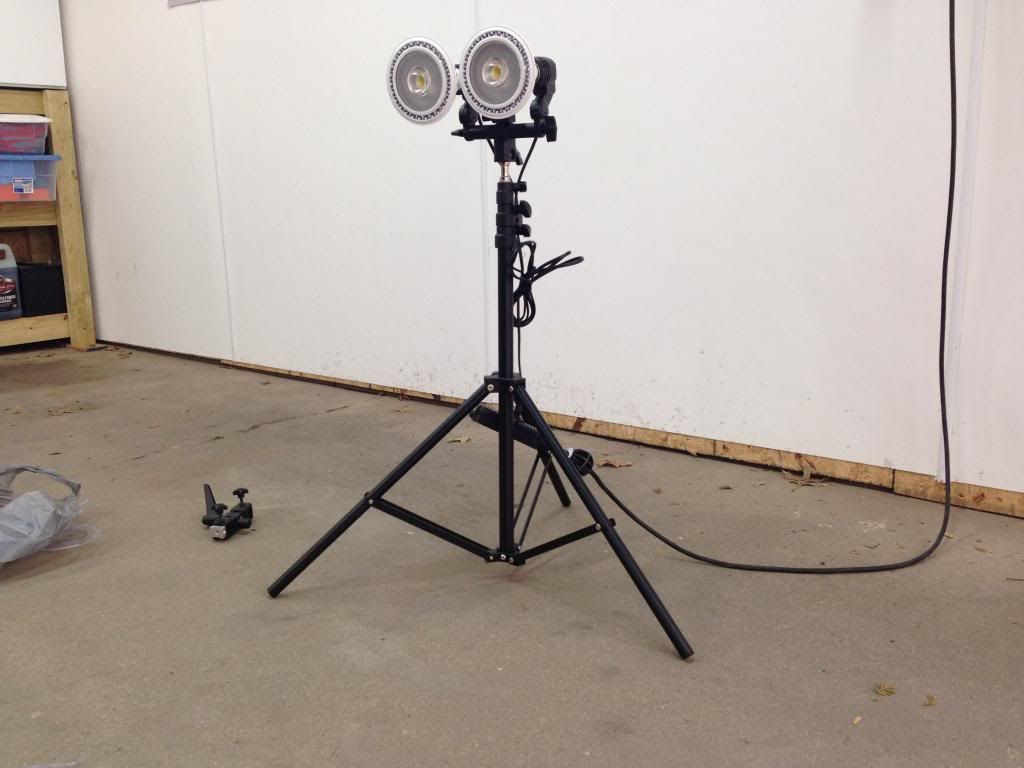
Photo: Assembled "DIY Light"
First, I turned just one LED bulb on and compared it with the HD LED fixture. While the HD LED fixture is capable of 1720 lumens and my single LED bulb is only a 1400 lumen bulb, it was clear the single bulb had a MUCH more focused beam of light that lit up the vehicle much better than the "brighter" setup from HD (also notice the color difference between the 2 setups).
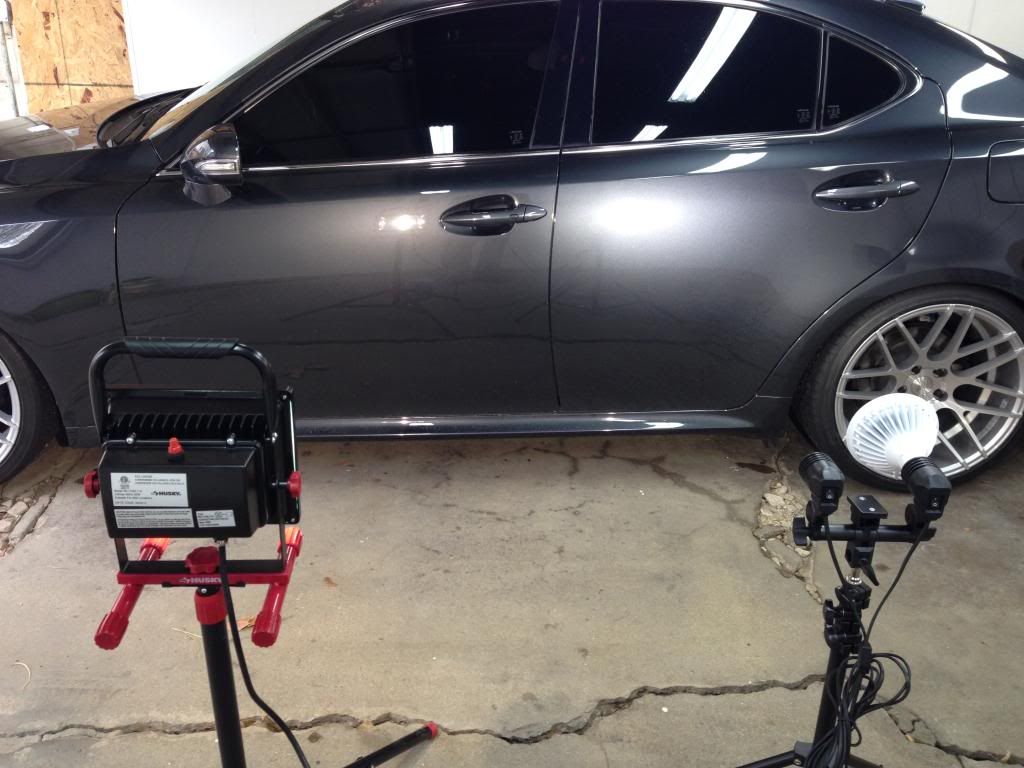
Photo: Comparing HD light to 1 bulb DIY Light
I then installed the 2nd bulb into my DIY fixture, and of course, this just made it even better.
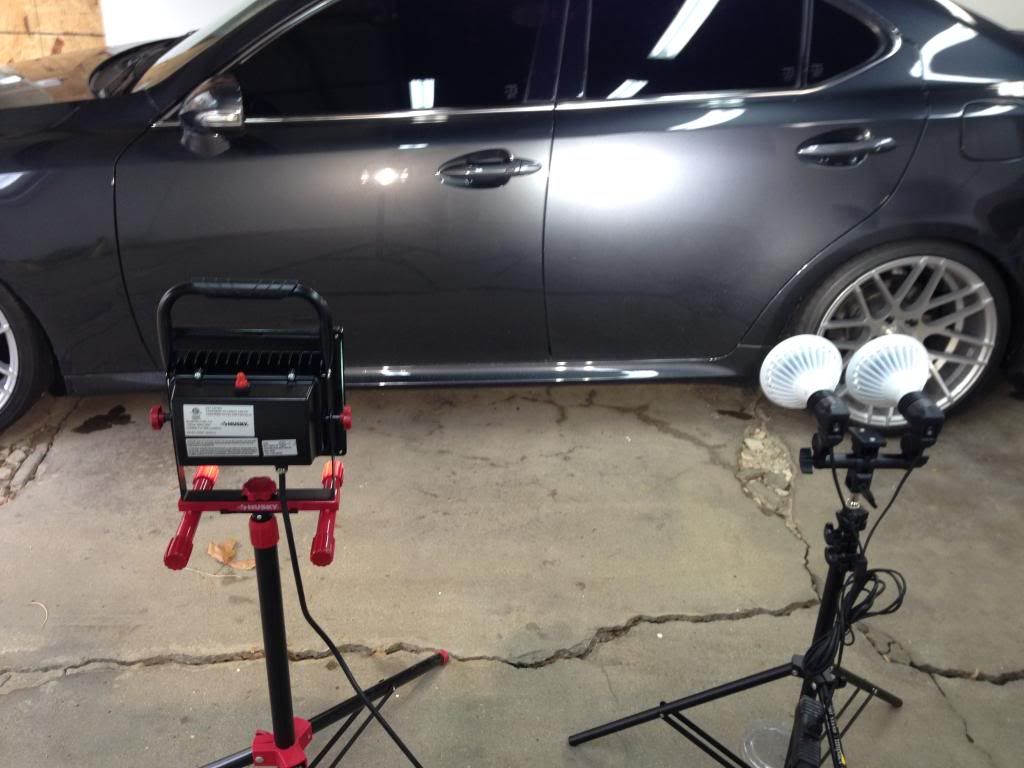
Photo: Comparing HD Light to Dual Bulb DIY Light
Note: In these photos it looks like the DIY fixture light is washing out the paint, however that is simply not the case in real life and it is just because the camera cannot capture the extreme dynamic range in these types of photos therefore that entire lit area appears to be overexposed. A closer look at the paint shows that these spot lights are a nice, focused beam of light that work great for this application (also notice my paint still looks great after 1.5 years  ) )
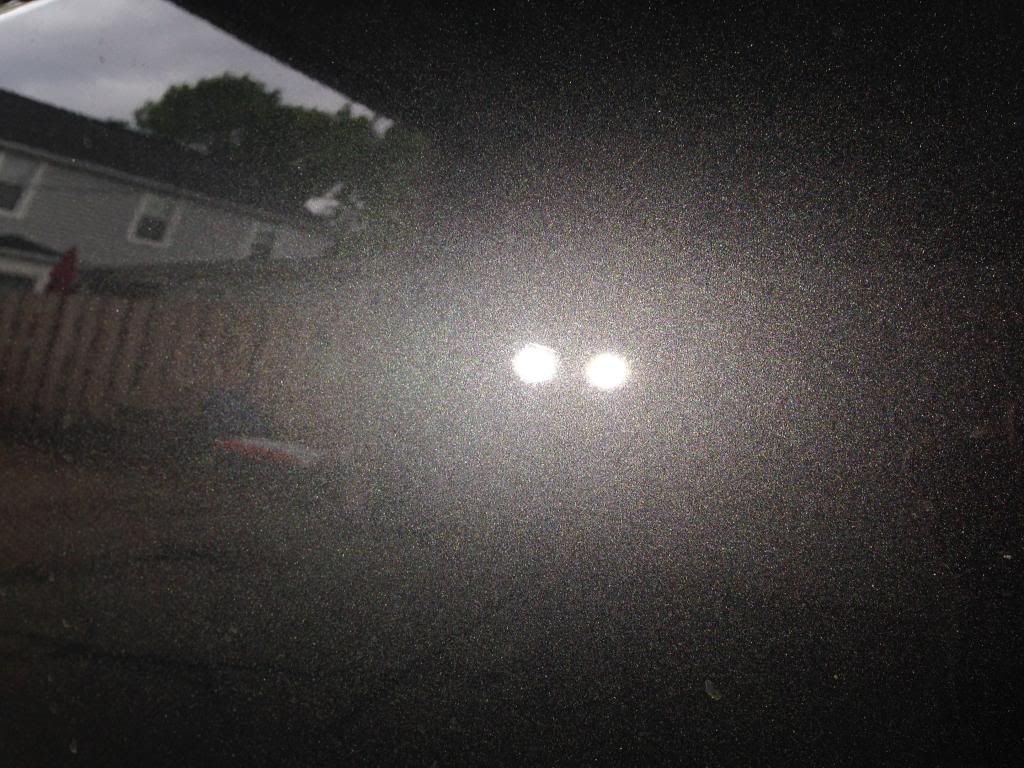
Photo: Showing inspection capabilities of DIY Light
In the end, I spent a little bit more on my "DIY" rig than I did on the single light from Home Depot, but I feel it was well worth the added cost. This light is definitely a step up from the halogens (although those will still have a place, as I believe that checking your work in various light sources is very important!).
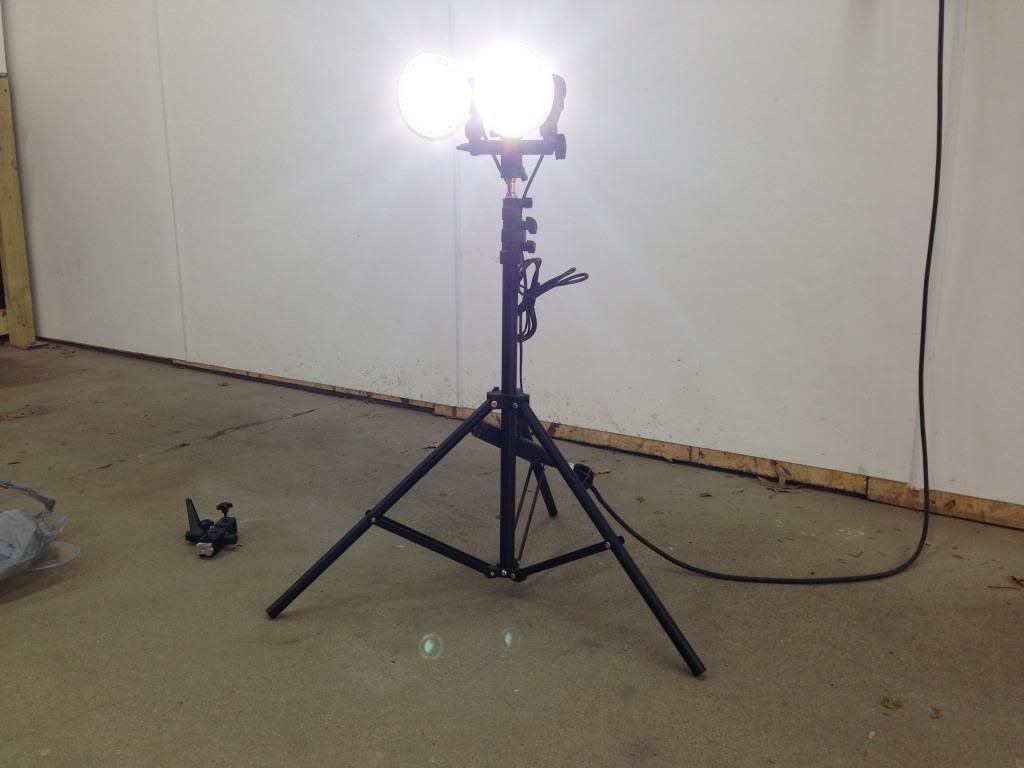
Cost Summary
Light Stand: $15
Dual Bulb Base: $9
LED Bulb (par38): $38 (x2)
Total: $100
Over the past 3 years that I have been using my halogen lights, I'd estimate I have purchased ~$50+ in bulbs, so I am really hoping these LED's live up to their life expectancy claims!
Specs
Output: 2800 Lumens (1400/bulb)
Color Temp: 5000k (daylight)
Power Consumption: 23 watts/bulb
So next time you are shopping for a new detailing work light, consider this as a worthy option!
-Zach
 Retired Professional Detailer
Retired Professional Detailer
-
Post Thanks / Like - 1 Thanks, 1 Likes, 0 Dislikes
 Ferox
Ferox thanked for this post
Similar Threads
-
By alfierenadhie in forum Auto and Garage Accessories
Replies: 2
Last Post: 12-02-2018, 04:23 AM
-
By Edi25 in forum Auto Detailing 101
Replies: 11
Last Post: 06-22-2017, 07:37 PM
-
By zmcgovern45 in forum Auto Detailing 101
Replies: 36
Last Post: 09-12-2013, 12:07 PM
-
By capnp72 in forum Auto Detailing 101
Replies: 12
Last Post: 01-30-2013, 03:15 PM
-
By THENIZZZEIL in forum Off-Topic
Replies: 10
Last Post: 10-13-2007, 10:42 PM
 Members who have read this thread: 3
Members who have read this thread: 3
 Posting Permissions
Posting Permissions
- You may not post new threads
- You may not post replies
- You may not post attachments
- You may not edit your posts
-
Forum Rules
|
| S |
M |
T |
W |
T |
F |
S |
| 26 | 27 | 28 | 29 | 30 | 31 |
1
|
|
2
|
3
|
4
|
5
|
6
|
7
|
8
|
|
9
|
10
|
11
|
12
|
13
|
14
|
15
|
|
16
|
17
|
18
|
19
|
20
|
21
|
22
|
|
23
|
24
|
25
|
26
|
27
|
28
|
29
|
|
30
| 1 | 2 | 3 | 4 | 5 | 6 |
|

)












 Thanks:
Thanks:  Likes:
Likes:  Dislikes:
Dislikes: 













 Reply With Quote
Reply With Quote
Bookmarks